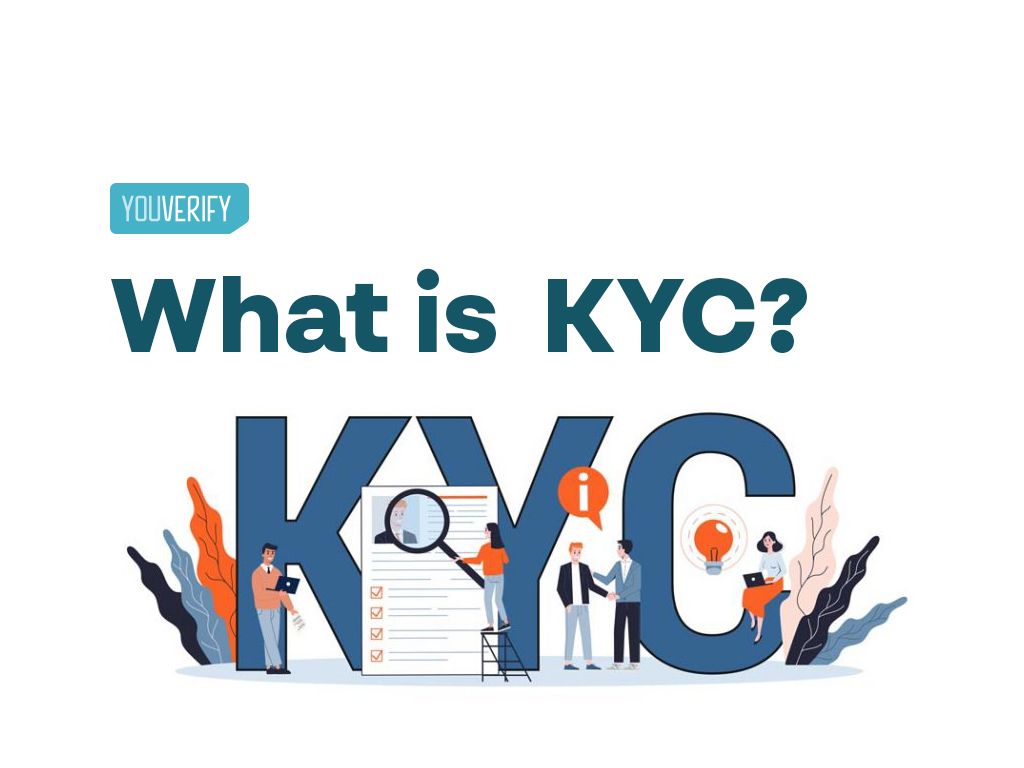What is KYC? The KYC (Know Your Customer) process is the basis of AML and CFT compliance regulations worldwide and requires financial institutions to identify their customers and work to understand the nature of the business involved..
Understanding context
Since cryptocurrencies are cryptographically secured on their blockchains, transactions between users are generally anonymous and take place in seconds. The speed and anonymity of cryptocurrency transactions is an attractive opportunity for criminals seeking to evade conventional AML/CFT controls. It is estimated that as of 2022, approximately ten billion dollars in cryptocurrencies are held in illegal addresses.
What is KYC? As global regulatory authorities pay increasing attention to cryptocurrency transactions, crypto exchanges must address the anonymity issue associated with such transactions by implementing proper KYC processes to understand who their customers are and how they use their services.
What does KYC mean in crypto exchanges? | What is KYC
What is KYC? A conventional KYC process involves a series of due diligence measures, along with ongoing review and monitoring of how customers access the services a particular company offers. By building a rich and accurate risk profile for each individual customer, financial service providers are significantly better equipped to detect customers abusing their services and to prevent crimes such as money laundering and terrorist financing.
In the context of crypto exchanges, KYC can be a more complex compliance challenge as companies must work harder to establish the identity of users using their digital services and understand the details of the transactions they enable.
In practice, compliance with digital KYC means that traditional KYC practices should be adapted to the specific challenges faced by crypto exchanges and include the following measures.
Identity Verification: In order to build accurate risk profiles, crypto exchanges should be able to compile very accurate profiles of their clients. With this in mind, exchanges must obtain and verify their customers’ identifying information, including names, addresses, dates of birth and relevant corporate information.
Customer monitoring: Exchanges should continuously monitor their customers’ transactions, paying particular attention to signs of criminal activity, which may include unusual transaction patterns or transactions involving high-risk customers and locations.
Oversight: Exchanges must screen their clients to ensure they are not subject to international sanctions or Politically Exposed Persons (PEPs), who are at greater risk of being involved in money laundering.
Adverse media: Client risk profiles can receive information about adverse news before that same information appears in official sources. Exchanges should continuously check to detect possible involvement of clients in adverse media.
Automation of KYC | What is KYC
AML/CFT compliance regulations require crypto exchanges to collect, analyze and store vast amounts of digital customer and transaction data. To fulfill this obligation, crypto exchanges should strive to integrate appropriate software solutions. With automated speed, efficiency and accuracy, software solutions help companies add depth to their KYC processes and build richer, more detailed risk profiles of their clients.
Automated KYC processes can also help exchanges adapt to their regulatory environments and make important risk-based decisions quickly. Similarly, with the benefits of machine learning systems, exchanges could conduct deeper levels of historical data analysis to uncover unforeseen vulnerabilities or unexpected deviations from expected financial behaviors.
Risks of improper KYC
Cryptocurrency exchanges should be aware of the following vulnerabilities and risks when developing and implementing their KYC solutions.
Anonymous Transactions: Cryptocurrency exchange transactions offer money launderers a degree of online anonymity. Accordingly, exchanges should seek to collect information through identity verification procedures, such as digital checks and obtaining customer biometric data, such as face, voice and fingerprint scans.
Speed of transactions: Cryptocurrency funds can be moved between accounts in seconds, often faster than AML/CFT controls. Exchanges should ensure that their own AML/CFT checks and monitoring procedures can be fully implemented before funds are transferred to user wallets.
Structured transactions: Money launderers may try to avoid reporting thresholds by structuring their transactions in small amounts across multiple accounts. Crypto exchanges should ensure that their controls prevent the creation of multiple accounts and share information with other financial service providers to detect and prevent structuring strategies.
Money Mullahs: Money launderers can further exploit the vulnerabilities of cryptocurrency transactions by forcing or encouraging third parties, known as “money mullahs”, to engage in crypto exchange services on their behalf. Exchanges should work to detect money mules by conducting appropriate due diligence and identifying clients whose profiles do not match their wealth or expected financial behavior.
Negative influence | What is KYC
In addition to regulatory risks, crypto exchanges with inadequate or inadequate KYC processes also risk a negative impact on their customers’ experience and satisfaction with their services. Under risk-based approaches, KYC enables exchanges to build detailed risk profiles and subsequently adjust their AML/CFT controls to better suit individuals. With this in mind, an effective KYC method is to optimize experiences for lower-risk customers, ensuring speed and efficiency of service wherever AML/CFT scrutiny is not required.
Who is Satoshi Nakamoto? Check HERE.

